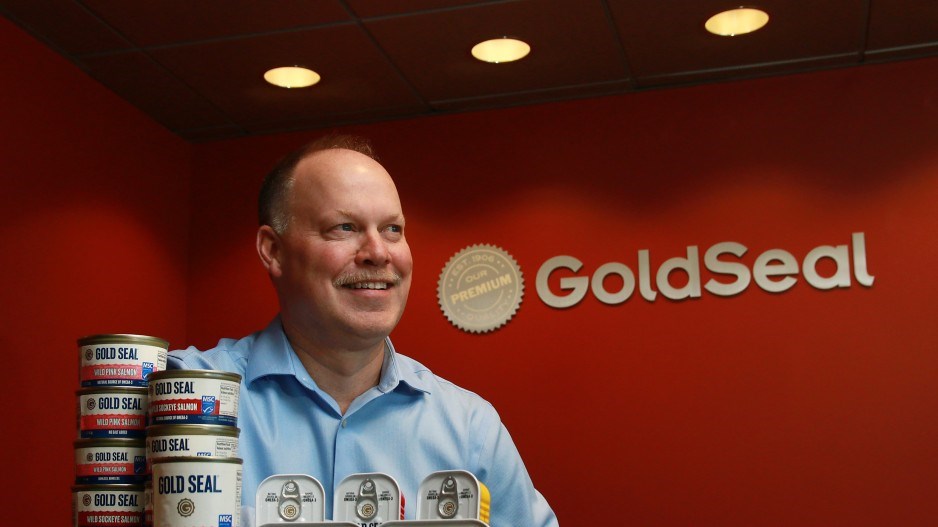Gold Seal canned salmon will be 100 years old next month – making it one of Canada’s most enduring food brands.
“What’s allowed this brand to survive 100 years is Gold Seal always has had a very high standard for quality,” said Ian Ricketts, president of label owner Ocean Brands, part of the Jim Pattison Group.
“Today, we still can products the exact same way. It’s salmon and salt. It hasn’t changed in 100 years, but it’s the highest grade of salmon that meets our criteria. We turn away salmon every year that doesn’t meet our criteria.”
Canadians are no doubt familiar with Gold Seal sockeye and pink canned salmon. What they may not know is that none of the salmon is from British Columbia. It all comes from Alaska now, where it is also canned.
Gold Seal also sells canned sardines and mackerel, which are sourced from a number of countries.
The B.C. coast once hosted up to 80 canneries. With the exception of one small boutique cannery in Nanaimo, all the major canneries in B.C. have shut down. The last one to go was the Canadian Fishing Co. (Canfisco) cannery in Prince Rupert, which closed in 2015.
The reason for the closure of B.C. canneries is twofold. For one thing, the commercial salmon catch in B.C. has been declining since the 1990s.
But even before the commercial catch numbers began falling, refrigeration and improved transportation meant less salmon for canneries, since more fish could be sold fresh or frozen.
Canning salmon used to be the only way to preserve it, apart from smoking it. Today, fresh-caught sockeye can be flown to Japan or hauled to Saskatchewan by refrigerator truck.
“Canning used to be the only way you could preserve the fish fast enough,” Ricketts said.
“These fish come in in the millions over a period of three weeks, and we never used to have the ability – with technology in freezing – to be able to handle the volumes of fish that would be required, so canning was the natural way to preserve the quality of the fish.
“Today’s consumer preferences are for fresh first, if they can, and other forms of value-added salmon. You’ve got emerging economies around the world that have grown a western appetite for salmon, so you’re seeing a lot of the salmon that was directed toward the can now go to overseas markets.”
The Canadian Fishing Co. began producing salmon in 1868, and the Gold Seal brand received its trademark in 1919. The company used to have its own fleet of fishing boats that caught B.C. salmon. In 1984, Canfisco and Gold Seal were acquired by the Jim Pattison Group.
Canfisco still owns fishing boats, but the salmon it catches in B.C. is strictly for the fresh and frozen fish market.
“Ocean Brands does not fish,” Ricketts said. “We don’t have boats or licences. We have brands.”
Ocean Brands operates in Richmond on Sea Island, where a team of 34 manages the buying, distribution and marketing of canned sockeye and pink salmon, sardines and mackerel.
Gold Seal sells roughly five million cans of pink and sockeye salmon each year, most of it in Canada. The salmon comes from Bristol Bay, Alaska, which last year had the largest salmon return on record – 56 million, with sockeye accounting for about 42 million.
Ocean Brands is a B Corp certified company, which requires a commitment to high standards for treatment of employees and environmental sustainability.
“Sustainability ranks extremely high,” Ricketts said. “We have very healthy, well-managed reliable runs of MSC [Marine Stewardship Council] certified salmon from Bristol Bay, Alaska, that we rely on.”




